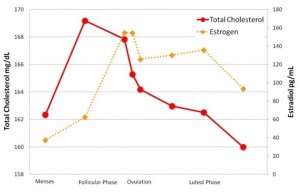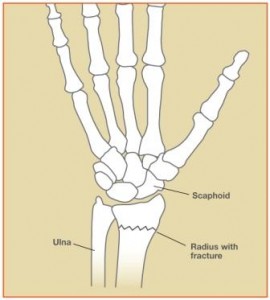 The health of pregnant women can say a lot about a region. It can indicate the accessibility and affordability of health care, as well as how much recognition maternal health receives in the region. A healthy pregnancy results in healthier children and decreased risk for maternal death. Conversely, measuring maternal mortality rates can also indicate the level of health resources within a country
The health of pregnant women can say a lot about a region. It can indicate the accessibility and affordability of health care, as well as how much recognition maternal health receives in the region. A healthy pregnancy results in healthier children and decreased risk for maternal death. Conversely, measuring maternal mortality rates can also indicate the level of health resources within a country
In 2000, the United Nations adopted the Millennium Declaration, which established a series of goals including Millennium Development Goal 5. The goal aimed for a 75% reduction in the maternal mortality ratio (MMR) from 1990 to 2015. The MMR is a common statistic used to indicate the number of women, that die while pregnant or within 42 days of giving birth, for every 100,000 live births.
The Bill and Melinda Gates Foundation funded a study looking at maternal mortality rates over the past 28 years. In a report published in the Lancet this May, the authors examined the MMR across the globe using a variety of national and regional reports.
Using this data, the authors determined that there were about 340,000 maternal deaths in 2008 compared with 530,000 deaths in 1980. Between 1980 and 2008, the authors found some interesting trends. India had the largest number of maternal deaths of any country overall but the MMR substantially decreased over time. Eastern Asia reported the greatest reduction in maternal deaths while maternal mortality actually increased in sub-Saharan Africa during the 1990s. As of 2008, sub-Saharan Africa made up 52% of the global maternal deaths.
Additionally, in 2008, all the countries in western Europe, Canada, and Australia had maternal mortality rates below 10 (Italy was lowest with 4). The USA, on the other hand, had an MMR of 17, an increase from 1980, which the authors say may be due to increased reporting.
In contrast, over 21 countries had no data for the entire period between 1980 and 2008. Many of these countries are in northern Africa and the Middle East, which may indicate a low awareness of maternal mortality issues.
While the global MMR decreased over the past 28 years, the spread of HIV over the 1980s and 1990s initially caused maternal deaths to increase. Better treatment of HIV-positive women now prevents many of these maternal deaths (and decreases the spread of the virus during childbirth). Over this time period, the MMR was estimated to decrease 1.5% a year. While an improvement, it does not meet the 5.5% annual MMR decrease needed to meet Millennium Development Goal 5.
While the authors could only speculate on the direct causes of decreased maternal death rates, they do suggest some possibilities. During this same time period as the study, the total fertility rate decreased, which usually correlates with decreases in maternal mortality. In addition, income per person rose, particularly in Asia and Latin America. This can affect maternal and child mortality by increasing nutritional status and access to health care. Maternal education levels and birth assistance by a skilled professional also increase maternal health.
While it appears that the maternal mortality ratio will not meet the 2015 goals of the Millennium Declaration, continued efforts are being put forth to promote this important issue. President Obama has also proposed the Global Health Initiative, which will invest federal dollars to help other countries strengthen their health systems, with an emphasis on maternal and child health. In addition, public health advocacy groups also work around the globe to support this mission, including the White Ribbon Alliance. By working together, these organizations may continue to increase the awareness of health care for pregnant women and reduce maternal deaths.
______________
To read Kate’s posts about issues surrounding cancer and fertility, go to the Oncofertility Consortium Blog.
 Women's cholesterol levels vary with phase of menstrual cycle
Women's cholesterol levels vary with phase of menstrual cycle

 In July, a commentary in the journal
In July, a commentary in the journal  We all hear that fiber is good for you yet many American's don't get enough of it in their diets. Experts recommend that men get about 38 grams of fiber a day and women get about 25 grams. Unfortunately, the average intake in the United States is only 14 grams a day.
We all hear that fiber is good for you yet many American's don't get enough of it in their diets. Experts recommend that men get about 38 grams of fiber a day and women get about 25 grams. Unfortunately, the average intake in the United States is only 14 grams a day. The health of pregnant women can say a lot about a region. It can indicate the accessibility and affordability of health care, as well as how much recognition maternal health receives in the region. A healthy pregnancy results in healthier children and decreased risk for maternal death. Conversely, measuring maternal mortality rates can also indicate the level of health resources within a country
The health of pregnant women can say a lot about a region. It can indicate the accessibility and affordability of health care, as well as how much recognition maternal health receives in the region. A healthy pregnancy results in healthier children and decreased risk for maternal death. Conversely, measuring maternal mortality rates can also indicate the level of health resources within a country Reps. Jan Schakowsky (IL), Ed Markey (MA) and Tammy Baldwin (WI) introduced legislation that would toughen safety standards for cosmetics and give the U. S. Food and Drug Administration (FDA) the authority to check personal care products for harmful ingredients. Current law allows the FDA to defer decisions about ingredient safety to the cosmetic industry. In other words, the cosmetic industry is regulating itself. According to the Campaign for Safe cosmetics, provisions in the legislation will:
Reps. Jan Schakowsky (IL), Ed Markey (MA) and Tammy Baldwin (WI) introduced legislation that would toughen safety standards for cosmetics and give the U. S. Food and Drug Administration (FDA) the authority to check personal care products for harmful ingredients. Current law allows the FDA to defer decisions about ingredient safety to the cosmetic industry. In other words, the cosmetic industry is regulating itself. According to the Campaign for Safe cosmetics, provisions in the legislation will: I just received a FDA email about the safety of color additives in food. What caught my eye was the subheading: "Without color additives, colas wouldn't be brown, margarine wouldn't be yellow and mint ice cream wouldn't be green." I wonder if colorless food could help reduce the obesity epidemic!!! Seriously, to read the article, click
I just received a FDA email about the safety of color additives in food. What caught my eye was the subheading: "Without color additives, colas wouldn't be brown, margarine wouldn't be yellow and mint ice cream wouldn't be green." I wonder if colorless food could help reduce the obesity epidemic!!! Seriously, to read the article, click  CHICAGO --- Wrist fractures have an important personal and public health impact and may play a role in the development of disability in older people, according to a Northwestern University study published by the
CHICAGO --- Wrist fractures have an important personal and public health impact and may play a role in the development of disability in older people, according to a Northwestern University study published by the  I recently received a copy of an
I recently received a copy of an